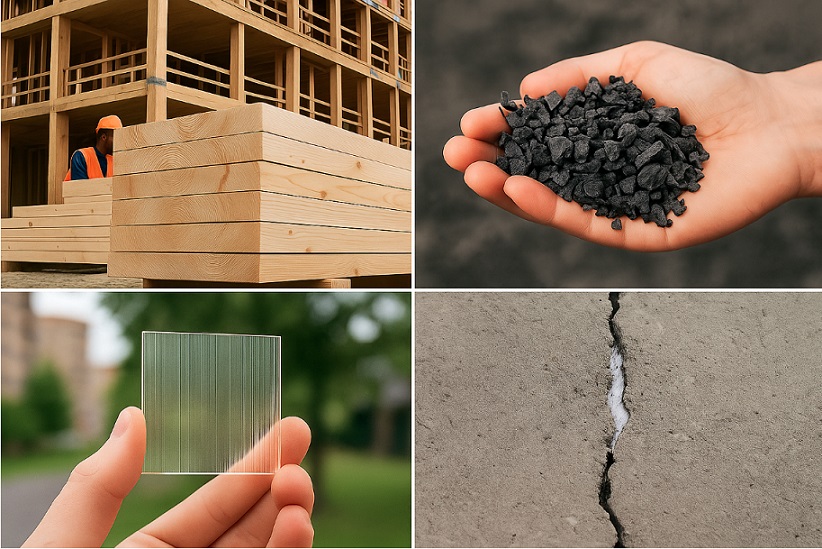The construction industry is always changing Over the last decade, there has been a strong push toward sustainably sourced, energy-efficient, and cost-effective materials. In this article we’ll take a closer look at recently developed materials that have gained much popularity in the industry and show some example projects where they were implemented.
Cross-Laminated Timber
Cross Laminated Timber or CLT is a form of engineered wood created by gluing multiple layers of lumber at right angles to one another, typically three to seven layers. CLT is known for its strength and have even been implemented in high rise buildings across Europe. Some examples include the Mjøstårnet in Norway, reaching 87m in height, and a 10 story building in London reaching 33m in height. It’s a renewable, low-carbon alternative to concrete and steel.
Self-healing concrete
Self-healing concrete is concrete enhanced with bacterial agents or polymers that seal cracks when activated by moisture, enhancing durability and reducing maintenance. This concept was recently implemented in a water tower in the Malta Marsa Water Tower. A historic water tower, 15m in height, was saved using advanced ultra-high-ductility cementitious (UHDC) materials which form part of self-healing concrete technology.
It’s been trailed and implemented in roads, bridges, tunnels, and select buildings. It helps extend the lifespan of concrete structures and cuts down on maintenance costs.
Biochar
Biochar is a carbon-rich form of charcoal made from organic biomass. It is used as an additive in plasters and bricks to enhance materials. It helps to improve insulation, humidity regulation and is even fire resistant.
Biochar is made through a process called pyrolysis, the thermal decomposition of organic material with the absence or near-absence of oxygen. This process prevents the biomass from burning completely into ash and instead converts it into a stable, carbon-rich solid.
Application is still limited, but there have been trials conducted by the Ithaka Institute in Switzerland. They’ve shown that mixing biochar with plaster is proven to improve insulation and regulate indoor humidity.
Translucent wood
Translucent wood has been chemically treated to remove lignin. Afterwards it gets infused with polymers to create a unique, near-transparent material. It’s known to maintain strength, light transmission, improved insulation and is marketed as an alternative to glass.
This material is still in the prototype phase, not yet incorporated in any major builds but is gaining ground across Europe in Sweden and Germany where there is a big interest in renewable buildings and materials.
Graphene-enhanced concrete
This is concrete mixed with graphene or graphene oxide to improve strength, reduce material usage and enhance durability. The material is available in various projects in the UK and Middle East as an additive to concrete mixes.
Summary
As the construction industry continues to evolve, materials like CLT, self-healing concrete, biochar, translucent wood, and graphene-enhanced concrete are shaping a more sustainable and resilient future.
While some are already widely adopted and proving their value in real projects, others are still emerging but show immense promise. By embracing these innovations, architects, engineers, and builders can reduce environmental impact, improve efficiency, and create longer-lasting structures that meet the demands of modern society.
At IQ Construction, we keep a close eye on these innovations and explore practical ways to integrate the best new materials into modern building projects. By embracing these advancements, we aim to deliver spaces that are not only efficient and durable but also environmentally responsible for generations to come.
